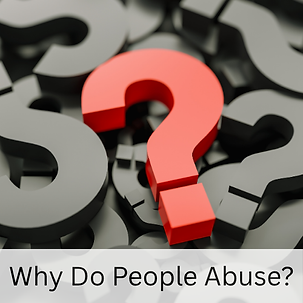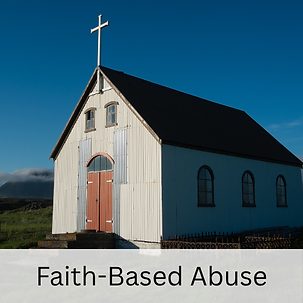Tool Kits for Families:
The Understanding Child Sexual Abuse: Community Tool Kit is a clear, practical guide for recognizing, preventing, and responding to child sexual abuse. It defines the crime, outlines common abuse types—from molestation and online exploitation to trafficking—and explains why immediate reporting is critical. The toolkit provides step-by-step instructions for supporting victims, including staying calm, believing the child, documenting details, and contacting law enforcement or CPS. It emphasizes that reporting can stop abuse, protect other children, and connect victims with help, even if the abuse occurred years ago.
The Sexual Harassment vs. Sexual Abuse: Community Tool Kit helps readers understand the differences between harassment and abuse while emphasizing that both are serious and reportable. It defines sexual harassment as unwanted sexual advances, comments, gestures, or contact—occurring in workplaces, schools, public spaces, or online—and explains how it can signal potential escalation to assault. The guide outlines verbal, non-verbal, physical, and digital harassment examples, contrasts harassment with sexual assault, and provides clear reporting options. It stresses that harassment is about power and disrespect, not attraction, and urges timely action to protect victims.
The Consent vs. Compliance: Community Tool Kit explains the critical difference between freely given consent and coerced compliance in sexual abuse cases. It defines consent as a voluntary choice without fear, pressure, or manipulation, and clarifies that minors, incapacitated individuals, or those under threat cannot legally consent. Compliance, by contrast, occurs when victims submit due to fear, grooming, or power imbalances—making it not true consent. The guide outlines why this distinction matters in investigations, provides common compliance scenarios, and offers clear steps for reporting abuse, supporting victims, and connecting them to help.
The Child Sexual Abuse: Must Knows – Community Tool Kit provides essential guidance for parents and community members on recognizing, responding to, and reporting abuse. It explains that disclosure is often delayed, with most cases discovered by adults rather than self-reported. The guide warns against untrained questioning, coaching, or confronting abusers, and stresses that only trained forensic interviewers should question a child. It offers clear steps for supporting victims, protecting evidence, and working with investigators. The toolkit reinforces that reporting to police and CPS is mandatory in most states, and immediate action can protect children.
The Warning Signs of Abuse in Children – Community Tool Kit helps parents and community members recognize the physical, behavioral, and emotional indicators of possible sexual abuse. It outlines red flags in both children and adults, explaining how secrecy, manipulation, and grooming enable offenders to gain access and maintain control. The guide details grooming tactics, from building trust to enforcing secrecy, and provides clear steps for immediate action—observing changes, trusting instincts, asking gentle questions, and reporting to authorities. It emphasizes that early recognition and prompt reporting can stop abuse and protect children from further harm.
The Understanding Incest – Community Tool Kit explains incest as sexual contact between family members or close relatives, including those related by blood, marriage, or adoption. It highlights that incest is both morally condemned and illegal in most U.S. states, and is one of the most common forms of child sexual abuse. The guide addresses barriers to disclosure, such as family pressure and lack of support, and warns of reoffense risk when abuse goes unpunished. It provides clear steps for supporting victims, documenting details, and reporting immediately to law enforcement or CPS to protect the child.
The Vulnerable Populations – Community Tool Kit identifies groups at higher risk of abuse and exploitation due to reduced ability to protect themselves, speak up, or access help. It outlines examples such as children, elderly persons, people with disabilities, LGBTQ+ individuals, Native Americans, homeless populations, trafficking victims, and more. The guide explains why offenders target these groups, the barriers they face in reporting abuse, and the community’s role in protection. It encourages awareness, early intervention, and reporting to law enforcement or protective services to safeguard vulnerable individuals from harm.
The Why Do Some People Sexually Abuse Children? – Community Tool Kit explains that child sexual abuse has no single cause, often arising from a mix of biological, psychological, and environmental factors. It outlines common offender types, including situational offenders who act opportunistically and preferential offenders who are primarily attracted to children. The guide examines motivations such as power, control, emotional needs, deviant desires, and opportunity, while identifying risk factors like boundary violations, seeking unsupervised access, and secrecy with children. By understanding these patterns, communities can better recognize, prevent, and respond to potential abuse.
The Sexuality and Sexual Development – Community Tool Kit explains the fundamentals of sex, sexual development, gender identity, and sexual orientation, emphasizing how biology, psychology, and environment shape these aspects of human life. It encourages understanding and support for children as they form their identities, noting that trust is vital for abuse disclosure. The guide also explores the complexity of sexual behaviors, psychological influences, and research on human sexuality. It warns that offenders may exploit taboos for arousal, making awareness and open dialogue essential for prevention, safety, and creating supportive, protective environments for children.
This Tool Kit helps parents and caregivers distinguish between age-appropriate sexual exploration and behaviors that may signal exposure to sexual content, unhealthy influences, or abuse. It categorizes behaviors from common and developmentally normal to high-concern actions requiring immediate professional intervention. The guide emphasizes teaching moments over punishment, using correct anatomical terms, and reinforcing body safety rules. By recognizing warning signs early and responding with education, guidance, and professional support when needed, adults can better protect children’s well-being and address potential abuse or harmful influences promptly.
The How to Talk to Young Children About Body Safety – Community Tool Kit offers practical guidance for teaching body safety starting as early as age two. It covers using proper anatomical terms, establishing boundaries and modesty, and teaching the difference between good and bad touches. The guide encourages respecting a child’s right to refuse unwanted physical contact, monitoring media and online activity, and repeating lessons regularly. It emphasizes staying calm, believing the child, and reporting to authorities if abuse is disclosed, noting that mandatory reporting laws apply in all states to protect children from harm.
The Abusive Relationships – Community Tool Kit explains how abuse often develops gradually, making it difficult for victims to recognize until they are deeply trapped. It details various forms of abuse, including verbal, psychological, emotional, physical, and sexual violence, along with toxic dynamics like control, isolation, gaslighting, and narcissistic abuse. The guide addresses stalking, domestic and interpersonal violence, and intimate partner sexual assault, noting their severe risks. It also highlights the impact on children who witness abuse, including emotional trauma, health problems, and increased risk of future victimization or offending, while urging awareness, intervention, and support.
The Child Physical Abuse – Community Tool Kit defines physical abuse as any non-accidental act causing injury or pain beyond reasonable discipline, including hitting, burning, shaking, or strangulation. It explains that excessive or harmful “discipline” is abuse, with aggravated cases involving serious injury, failure to provide care, or life-threatening actions. The guide addresses Munchausen by Proxy Abuse, noting its severity and legal challenges, and outlines criminal neglect, endangerment, and abandonment. By providing clear definitions, examples, and warning signs, the toolkit equips communities to recognize, report, and prevent harm, ensuring children’s safety and well-being.
The Child Advocacy Centers & Multidisciplinary Teams – Community Tool Kit explains how CACs provide child-friendly, trauma-informed spaces for victims of abuse or serious crimes. At a CAC, children can receive forensic interviews, medical exams, counseling, and advocacy services in one safe location. The guide highlights the MDT approach, where law enforcement, CPS, prosecutors, medical professionals, and advocates work together to protect children, share information efficiently, and strengthen cases. It emphasizes best practices for forensic interviews to ensure accuracy and reduce trauma, showing why the CAC/MDT model is the most effective for child protection and justice.
The Forensic Nurses & Forensic Medical Examinations – Community Tool Kit explains the dual medical and investigative role of forensic nurses in caring for abuse, violence, and exploitation victims. It outlines the seven key parts of a forensic exam—from informed consent and patient history to evidence collection, STI testing, and safety planning—emphasizing a trauma-informed, patient-centered approach. These exams, performed for both children and adults, preserve critical evidence while prioritizing the patient’s health and comfort. Even if victims choose not to report immediately, forensic exams ensure evidence is available for potential future investigations.
The Abuse in Faith-Based Communities – Community Tool Kit addresses how abusers exploit trust, close relationships, and spiritual authority within religious settings to harm and silence victims. It outlines barriers to reporting, such as fear of disbelief, retaliation, or damaging the congregation’s reputation. The guide emphasizes prevention through policies, background checks, and training, and urges reporting to law enforcement and CPS rather than handling allegations internally. It also highlights resources like MinistrySafe and GRACE for prevention, investigation, and victim advocacy, ensuring faith communities respond lawfully, protect victims, and avoid enabling abuse.
















